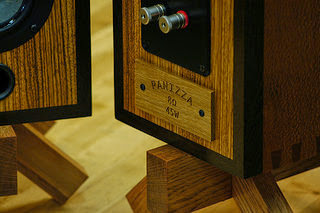 The last two projects I wrote about were items I built for myself. The next few posts will be about a set of four shelving units I started to build this weekend also for myself. I decided that a set of shelves will best and most economically hold my growing collection of integrated technology that includes the computing, audio, and display systems I use in my work and life at home. One of the shelving units will also act as a bookcase.
The last two projects I wrote about were items I built for myself. The next few posts will be about a set of four shelving units I started to build this weekend also for myself. I decided that a set of shelves will best and most economically hold my growing collection of integrated technology that includes the computing, audio, and display systems I use in my work and life at home. One of the shelving units will also act as a bookcase.I had two goals in mind as I set out to design the four shelving units. Each should reflect the quality my workshop is capable of producing so that they properly communicate my design and skill level during their lifespan, and yet the construction of each should attempt to minimize schedule and cost burden as much as possible.
I achieved the first goal by using mortise and tenon joined frame constructions for both side and shelf frames to give the shelving unit assemblies a simple and unified yet professional look. I am going to achieve the second goal by using as many commonly dimensioned parts as possible to minimize machine time and setup. Each shelving unit is therefore part of a product family based on a nearly common product platform.
You know how difficult this winter has been especially if you live and work in the upper Midwest as I do. I made a wood run for the project this morning sorting through a pile of lumber in an enclosed but unheated shed with the air temperature still in single digits looking for boards that were as straight as possible. I quickly stickered them on two even saw horses when I arrived back at the shop to minimize their chance of warping.






